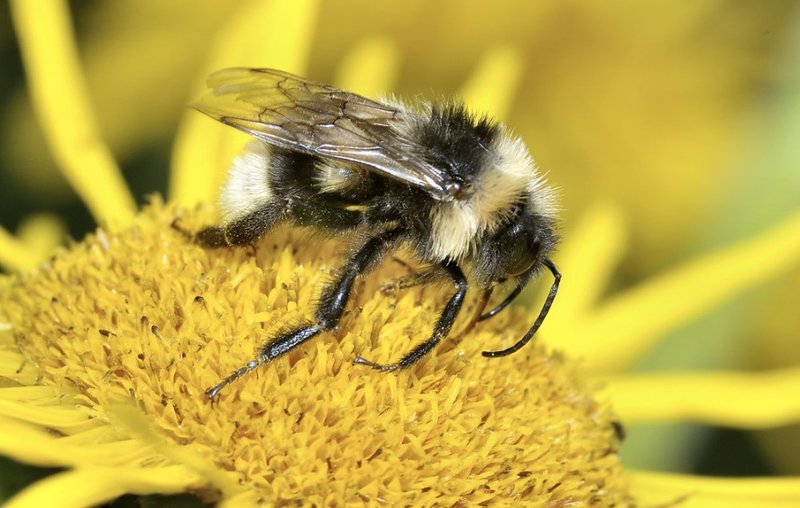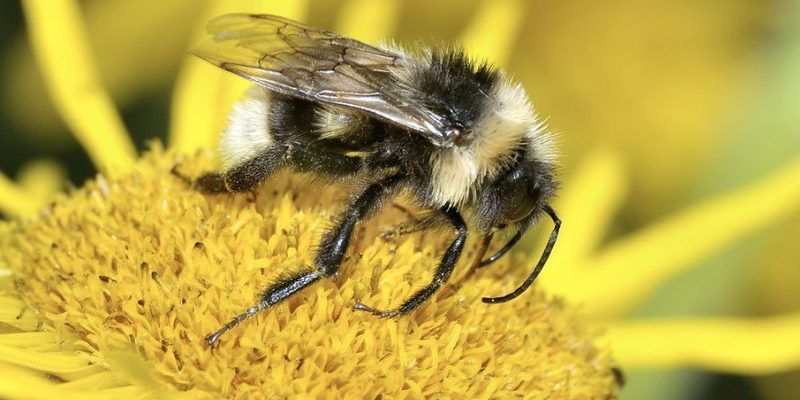
In this article, we’re diving into ten fascinating facts about the bumblebee. If you’ve ever wondered what makes these little guys tick, you’re in for a treat. Whether you’re a nature lover, a curious beginner, or someone who just enjoys random trivia, you’ll find insights that might surprise you. So, grab a cup of coffee, and let’s buzz through some incredible bumblebee facts together!
Bumblebees Are Super Pollinators
You might know that bees pollinate flowers, but bumblebees take this role to the next level. They are one of the most efficient pollinators around, capable of visiting thousands of flowers in a single day. This busy lifestyle helps fertilize plants so they can produce fruits and seeds.
When a bumblebee lands on a flower, it uses its fuzzy body to pick up pollen. Imagine it wearing a cozy jacket made of tiny hairs! As it moves from flower to flower, it transfers this pollen, ensuring plants can reproduce. This unique ability makes bumblebees essential for farming and agriculture. Crops like tomatoes, blueberries, and peppers often rely on these fuzzy friends to thrive.
What’s even cooler is that bumblebees can buzz pollinate. This means they vibrate their bodies to release pollen from flowers, a technique not all bees can do. This special skill makes them especially valuable for certain plants that need a little extra help.
They Have a Unique Social Structure
Bumblebees live in colonies that can range from a few dozen to several hundred individuals. Unlike honeybees, their colonies are not permanent. They start fresh every spring, with a new queen emerging from hibernation. Imagine a royal restart button!
The queen bumblebee is responsible for laying eggs and growing the colony. She’s like the boss, while the worker bees handle foraging for food, caring for the young, and maintaining the nest. Their teamwork is impressive! Once summer fades, the colony dwindles, and only new queens survive to start the cycle again the following spring.
This social structure helps them adapt to changing environments. When the temperature drops, and flowers disappear, their ability to hibernate gives bumblebees a crucial edge over other pollinators.
Bumblebees Are Cuddly in Appearance
One of the most charming aspects of bumblebees is their fuzzy appearance, which can make them hard to resist. They have thick hairs covering their bodies, giving them that adorable teddy bear look. These hairs aren’t just for show; they help with pollen collection and insulating the bees during cooler weather.
Their bright yellow and black stripes serve a purpose, too. While they may look cute, those colors act as a warning signal to potential predators. Many animals learn that bright colors often mean something is dangerous or unappetizing. So, bumblebees get a little help in the survival game just by looking fabulous!
Did you know there are over 250 species of bumblebees? Each has its unique coloring patterns and size. Some even look like they’re wearing little capes, thanks to their distinctive markings. Nature really knew what it was doing, creating these tiny superheroes!
Bumblebee Communication Is Fascinating
Ever wonder how bumblebees communicate with each other? They don’t chat over coffee like we do, but their methods are pretty cool. Bumblebees use a combination of pheromones and body movements to convey messages. Pheromones are basically chemical signals that can indicate the presence of food or warn of danger.
When a bee finds a great patch of flowers, it can share that discovery by leaving scent trails. Other bees can pick up on these cues and follow the scent back to where the feast awaits. Think of it as a secret password for accessing the best food spots!
Additionally, bumblebees perform little dances, similar to honeybees. This “dance” helps convey information about the direction and distance of a food source. It’s like they’re shaking their tiny bumblebee booties to share the good news!
They Have Short Lifespans but Important Roles
The lifespan of a bumblebee can be surprisingly brief, with most workers living only a few weeks. However, during that short time, they accomplish a lot! They spend their days foraging for nectar and pollen, maintaining their nests, and raising the next generation of bumblebees.
The queen may live a bit longer, up to a year, hibernating through the cold months until spring arrives. This limited lifespan doesn’t diminish their importance. In fact, each bee plays a crucial part in pollination and maintaining ecosystem health, which affects everything from our food supply to local wildlife.
Think about it: in a matter of weeks, a bumblebee can help produce fruits and vegetables that benefit us all. It’s a reminder that even small creatures can have a big impact on the world!
Bumblebees Are Found All Over the World
You might be surprised to learn that bumblebees are found on every continent except Antarctica. They thrive in various environments, from gardens to vast fields and even mountainous regions. Their adaptability is what allows them to flourish in so many places.
In colder climates, some bumblebee species have unique traits that help them survive harsh winters, like their ability to hibernate. In warmer areas, they can often be found buzzing around vibrant flowers, busy with their important tasks.
This widespread presence means that bumblebees play a role in many ecosystems, contributing to biodiversity wherever they go. Their ability to thrive in various locations underscores their significance in our planet’s health.
They Face Threats and Conservation Challenges
Despite their hard work, bumblebees face many threats today. Habitat loss, climate change, and pesticide use have all contributed to declining populations. Many species are now considered endangered. This decline is concerning because it threatens not only the bumblebees themselves but also our food supply and environment.
Conservation efforts are underway to help protect bumblebee populations. Creating bee-friendly gardens by planting native flowers, avoiding pesticide use, and preserving natural habitats are great ways we can all help. Increasing awareness about their plight can lead to positive changes, both locally and globally.
Every action counts! By creating a supportive environment for these incredible creatures, we’re ensuring that bumblebees can continue their vital work for years to come.
Bumblebees Have Unique Nesting Habits
Unlike honeybees, bumblebees often prefer to nest underground. They’ll seek out abandoned rodent burrows or other sheltered areas to build their cozy homes. These nests provide protection against weather and predators, giving the colony a safe space to thrive.
Inside, they create a warm environment by packing it with pollen and nectar, which also serves as food for the developing larvae. If you’re lucky enough to find a bumblebee nest, you might spot them darting in and out, diligently collecting provisions for their young.
Some species, however, may also nest above ground, like in thick grass or piles of leaves. This flexibility in nesting habits showcases their adaptability and resourcefulness in finding suitable homes.
Bumblebees are truly remarkable creatures that play vital roles in our ecosystems. From their efficient pollination to their unique social structures and adorable appearances, these fuzzy little pollinators capture our hearts and contribute to our planet’s health.
As we’ve explored these ten fascinating facts, it’s clear that protecting bumblebees is essential for not just their survival but our own well-being. So, the next time you see a bumblebee buzzing around, take a moment to appreciate its hard work and resilience. Let’s do our part to keep their populations thriving and ensure that these tiny superheroes continue to fly among us for years to come!

